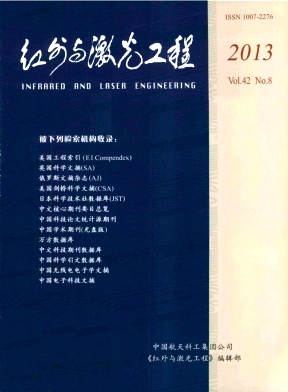Wang Shenggang. Inversed transient radiative transfer in one-dimensional non-homogeneous media[J]. Infrared and Laser Engineering, 2013, 42(8): 2012-2016.
| Citation:
|
Wang Shenggang. Inversed transient radiative transfer in one-dimensional non-homogeneous media[J]. Infrared and Laser Engineering, 2013, 42(8): 2012-2016.
|
Inversed transient radiative transfer in one-dimensional non-homogeneous media
- Received Date: 2012-12-11
- Rev Recd Date:
2013-01-15
- Publish Date:
2013-08-25
-
Abstract
One-dimensional non-homogeneous media irradiated with short pulse laser was treated in this paper. The influences of size, location, absorption coefficient and scattering coefficient on boundary signals were analyzed. According to the changes of parameter sensitivity, the sampling time range of time-resolved signals can be determined. Under such conditions, multi-parameters in one dimension non-homogeneous participating media were reconstructed simultaneously with conjugate gradient(CG) method. The simulation results have shown that different sensitivities were obtained for different irradiated locations, when the other conditions remain unchanged. The peak value of sensitivity appeared in different moment for different parameters. However, most variable information was contained in the twice transmission time. Therefore, the twice transmission time was proposed as the best sampling time range in inverse problems. Accurate results were obtained in multi-parameters inversion. The differences between the inversed results and true values increases with the increase of measure errors. Lager errors were obtained in the inversed results for the parameters with small sensitivities.
-
References
|
[1]
|
Wei Zhiyi, Wang Zhaohua, Han Hainian, et al. Progress on ultrashort and ultraintense laser pulse technology[J]. Infrared and Laser Engineering, 2007, 36(6): 773-777. (in Chinese) |
|
[2]
|
Gu X J, Ren K, Hielscher A H. Sensitivity analysis for small imaging domains using the frequency-domain transport equation[C]//SPIE, 2007, 6629: 66291Q-1-11. |
|
[3]
|
Kim H K, Charette A. A sensitivity function-based conjugate gradient method for optical tomography with the frequency-domain equation+onal temperature distribution in the combustor[J]. Journal of Combustion Science and Technology, 1999, 5(1): 62-69. (in Chinese) |
|
[4]
|
Gu Yuanxian, Zhou Yetao, Chen Biaosong, et al. Sensitivity based solution method for parameter identification of inverse heat transfer problems[J]. China Civil Engineering Journal, 2002, 35(3): 94-98. (in Chinese) |
|
[5]
|
Yang Haitian, Xue Qiwen. Solving non-linear inverse heat conduction problems in steady state via 2-level sensitivity analysis[J]. Journal of Engineering Thermophysics, 2003, 24(3): 463-465. (in Chinese) |
|
[6]
|
Liu L H, Tan H P, Yu Q Z. Inverse radiation problem in one-dimensional semitransparent plane-parallel media with opaque and specularly reflecting boundaries[J]. Journal of Quantiative Spectroscopy and Radiative Transfer, 2000, 64: 395-407. |
|
[7]
|
Mishra S C, Chugh P, Kumar P, et al. Development and comparison of the DTM, the DOM and the FVM formulations for the short-pulse laser transport through a participating medium[J]. Int J Heat Mass Transfer, 2006; 49(11-12): 1820-32. |
|
[8]
|
Ruan L M, Wang S G, Qi H, et al. Analysis of the characteristics of time-resolved signals for transient radiative |
-
-
Proportional views

-









 DownLoad:
DownLoad: